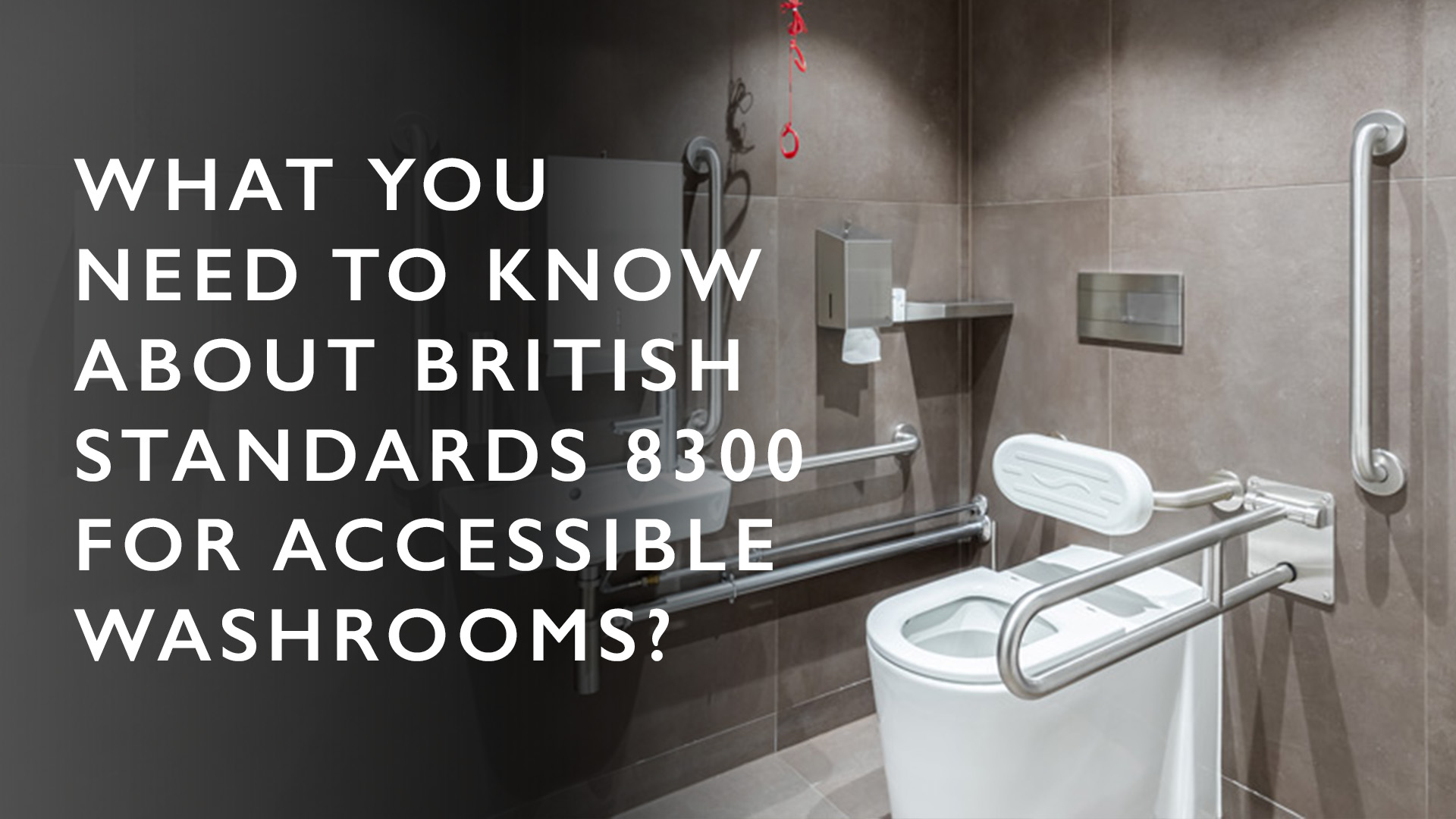05 May 2023
Reading time: 4 minutes
Accessible washrooms are essential for all public spaces, and it is essential to ensure they are designed and installed to meet the needs of all users. However, with different regulations and standards to consider, knowing which guidelines to follow can be confusing.
There may also be confusion regarding whether compliance with British Standards 8300 for wheelchair-accessible washrooms automatically results in compliance with UK Building Regulations. Additionally, if there is no legal obligation to follow British Standards, one may wonder why it is necessary to make the effort to do so.
Dolphin Solutions’ expertise in understanding the UK Building Regulations and British Standards 8300 for wheelchair-accessible washrooms is a result of our extensive experience in designing and manufacturing commercial washroom products such as Doc M packs and grab rails, our collaboration with industry professionals, and our commitment to staying informed about the relevant regulations and standards.
In this article, we will focus on the British Standards accessible requirements, specifically BS 8300-2:2018, and why it is important to adhere to them.
Check out this video about British Standards 8300 for accessible washrooms:


Which British Standards apply to designing an accessible washroom?
The British Standard accessible requirements are mainly set out in BS 8300-2:2018 Design of an accessible and inclusive built environment, Part 2: Buildings — Code of practice. British Standard 8300 outlines the best practice for accessible and inclusive building design, including toilet access for people with disabilities.
Although British Standard 8300 is essentially the main standard to follow, architects should also be aware of some of the other British Standards such as:
- BS 6465-2:2017 Sanitary installations, Part 2: Space recommendations — Code of practice
- BS EN 997:2012 WC pans and WC suites with integral trap
Do you have to follow UK accessibility Standards?
While compliance with these standards is not mandatory, they are widely accepted as good practice, and following them can help to ensure that wheelchair-accessible toilets are designed and installed in a way that meets the needs of wheelchair users and other people with disability impairments.
You will find that British Standards 8300 is frequently referred to in Document Part M of the Building Regulations when further detailed guidance on sanitary accommodation is recommended, particularly in sections relating to wheelchair-accessible washrooms. Even BS 6465-2:2017 stipulates that space needs for sanitary appliances used by disabled people should conform to BS8300.
Although Document Part M does not provide the same level of detail as BS8300, its endorsement of this British Standard implies that it only sets out the minimum legal requirements. To ensure that washrooms are safe and accessible for wheelchair users, it is essential to use British Standards 8300 in conjunction with Document Part M.

Does compliance with the BS8300 mean you comply with the law?
Compliance with the Design of an Accessible and Inclusive Built Environment British Standard does not relieve you of your legal responsibilities. You still need to comply with the relevant accessible toilet regulations as outlined in Document Part M.
While British Standards 8300 can provide useful guidance for designing accessible washrooms, compliance with the Building Regulations is a legal requirement that must be met independently.
What happens if you don’t follow UK accessibility Standards?
If you only meet the minimum requirements specified in Document Part M of the Building Regulations for accessible toilets and do not follow British Standards, you may be at risk of not providing adequate accessibility for people with disabilities. This could result in complaints, legal action, or even injury to users of the facilities.
In some cases, failing to meet British Standards for accessible washrooms may also impact the usability of the facility for its intended purpose. Therefore, it is highly recommended to follow the British Standards 8300 for accessible toilets to ensure the safety and accessibility of the users.

Where do you find a copy of BS8300?
You can purchase a hard copy or a digital copy of the BS 8300-2:2018 Design of an Accessible and inclusive built environment – Buildings. Code of Practice from the BSI Group website.
What is included in the BS8300 Standards for wheelchair-accessible toilets?
Clause 18 in the British Standards 8300 sets out accessible sanitary accommodation.
The standard covers much detail on the following facilities and requirements for accessible washrooms:
- General sanitary accommodation
- Shower rooms and bathrooms
- Changing and shower areas
- Accessible baby changing facilities
- Toilet accommodation
- Changing Places toilets
Remember, although these standards are not legally binding, they do provide guidance for architects, builders, and building owners to ensure that their facilities are accessible and inclusive for people with disabilities.
Importance of following UK accessibility Standards
Adhering to a British Standard demonstrates a commitment to fulfilling organisational responsibilities and is often regarded as evidence of exercising due diligence. It reflects positively on the attitude towards performing tasks with diligence and care.
While compliance with British Standards 8300 for wheelchair-accessible toilets may not be a legal requirement, it is widely accepted as good practice and can help ensure that facilities are safe and accessible for people with disabilities.
Architects, builders, and building owners should use BS 8300-2:2018 Design of an accessible and inclusive built environment, Part 2: Buildings — Code of practice in conjunction with Document Part M of the Building Regulations to ensure they are meeting both the minimum legal requirements and providing the necessary accessibility.
Failure to follow these standards may result in complaints, legal action, or injury to users of the facilities, as well as impacting the usability of the facility for its intended purpose. It is highly recommended to follow the British Standards 8300 for accessible toilets to ensure the safety and accessibility of the users.
Download our Accessible Washroom Checklist for WC Corner Layouts
This will help you identify what items you need and ensure the wheelchair fittings and layout dimensions are compliant.
Submit your details below and the download will be instantly available.




